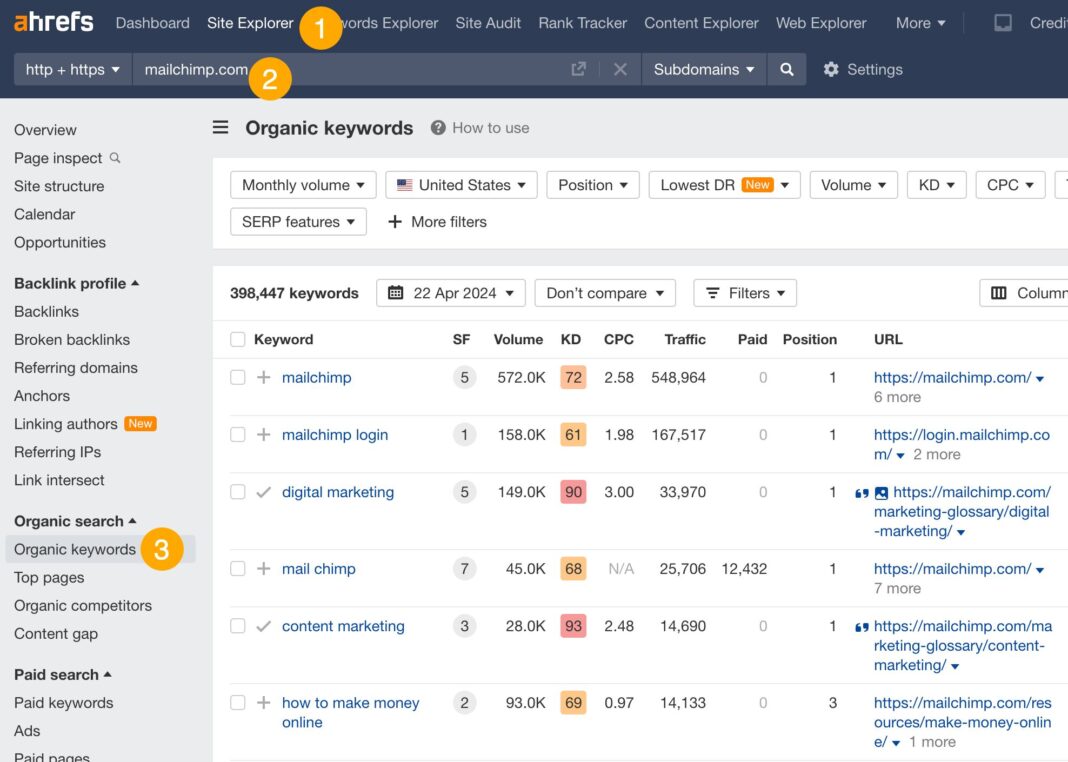Competitor key phrases are the key phrases your rivals rank for in Google’s search outcomes. They could rank organically or pay for Google Advertisements to rank within the paid outcomes.
Figuring out your opponents’ key phrases is the simplest type of key phrase analysis. In case your opponents rank for or goal specific key phrases, it is perhaps value it so that you can goal them, too.
There isn’t any technique to see your opponents’ key phrases and not using a software like Ahrefs, which has a database of key phrases and the websites that rank for them. So far as we all know, Ahrefs has the most important database of those key phrases.
The best way to discover all of the key phrases your competitor ranks for
- Go to Ahrefs’ Website Explorer
- Enter your competitor’s area
- Go to the Natural key phrases report
The report is sorted by visitors to point out you the key phrases sending your competitor probably the most visits. For instance, Mailchimp will get most of its natural visitors from the key phrase “mailchimp.”

Because you’re unlikely to rank on your competitor’s model, you would possibly need to exclude branded key phrases from the report. You are able to do this by including a Key phrase > Doesn’t comprise filter. On this instance, we’ll filter out key phrases containing “mailchimp” or any potential misspellings:
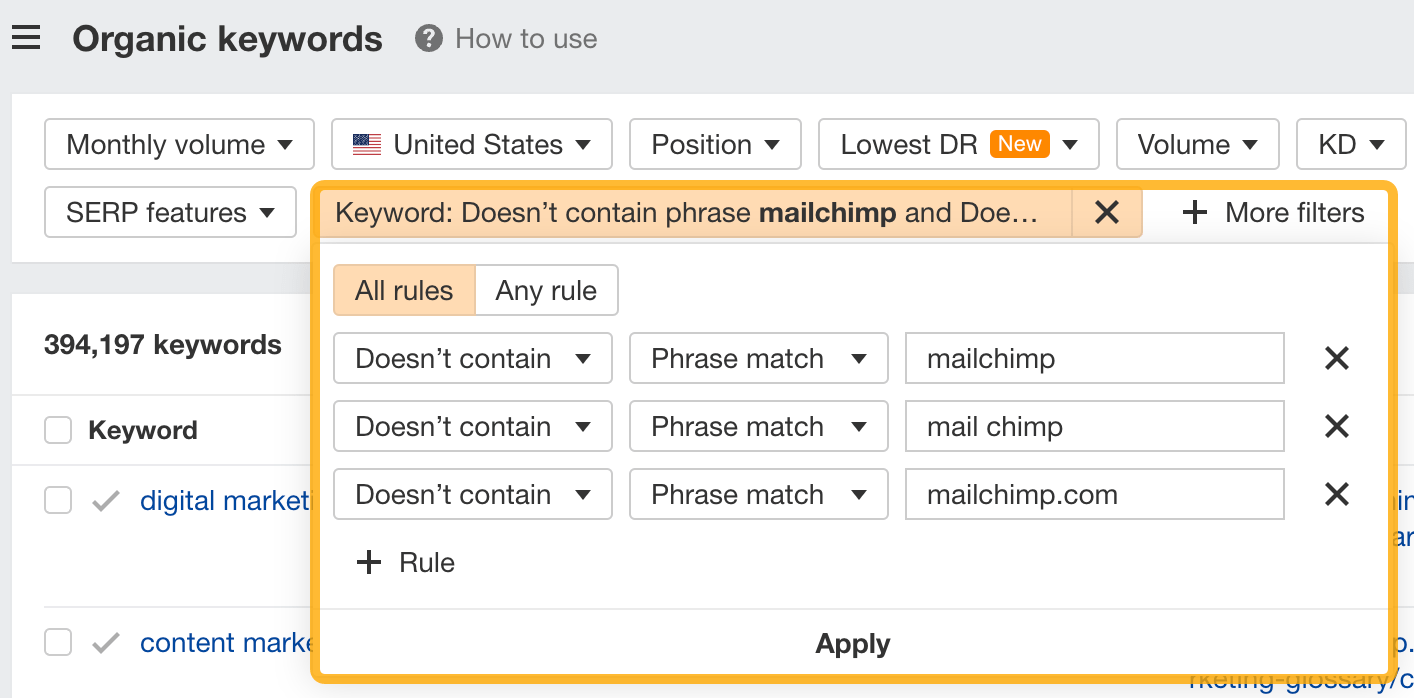
For those who’re a brand new model competing with one which’s established, you may additionally need to search for in style low-difficulty key phrases. You are able to do this by setting the Quantity filter to a minimal of 500 and the KD filter to a most of 10.
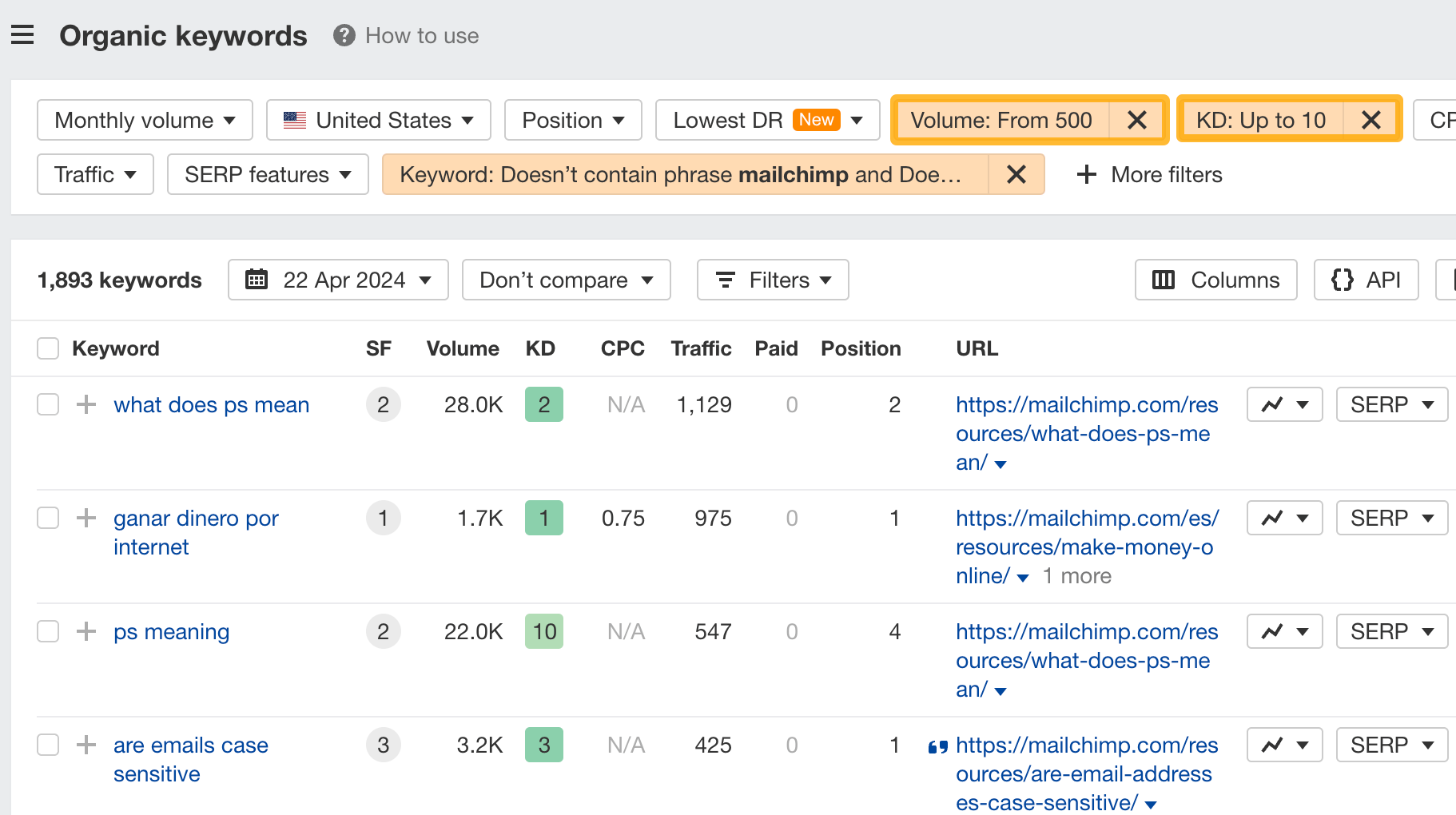
The best way to discover key phrases your competitor ranks for, however you don’t
- Go to Aggressive Evaluation
- Enter your area within the This goal doesn’t rank for part
- Enter your competitor’s area within the However these opponents do part

Hit “Present key phrase alternatives,” and also you’ll see all of the key phrases your competitor ranks for, however you don’t.

You can too add a Quantity and KD filter to search out in style, low-difficulty key phrases on this report.
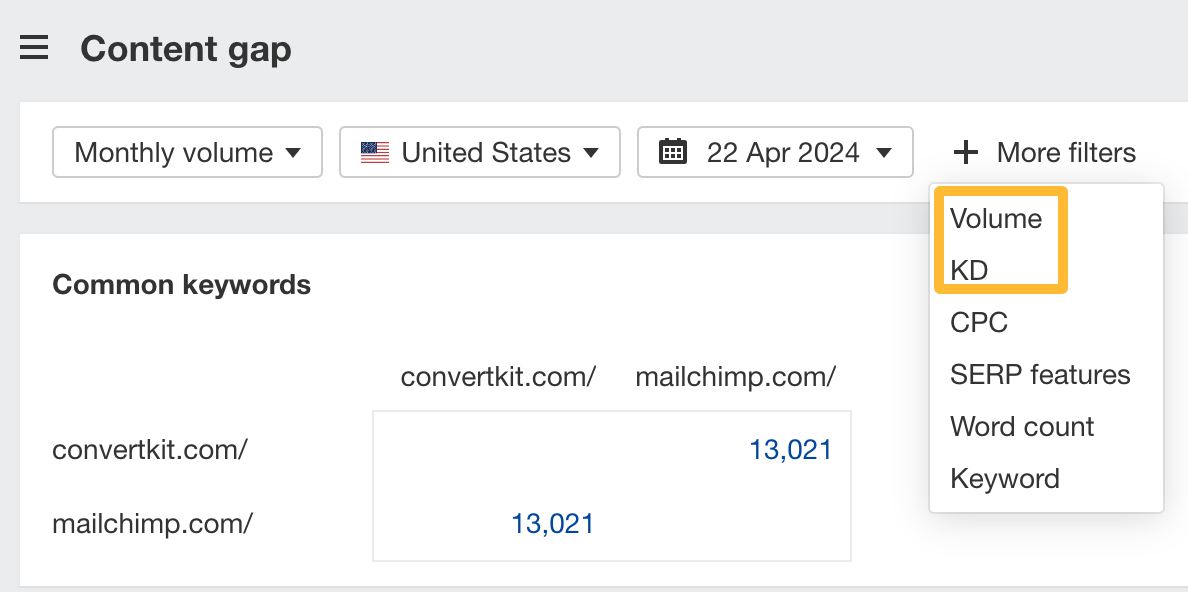
The best way to discover key phrases a number of opponents rank for, however you don’t
- Go to Aggressive Evaluation
- Enter your area within the This goal doesn’t rank for part
- Enter the domains of a number of opponents within the However these opponents do part
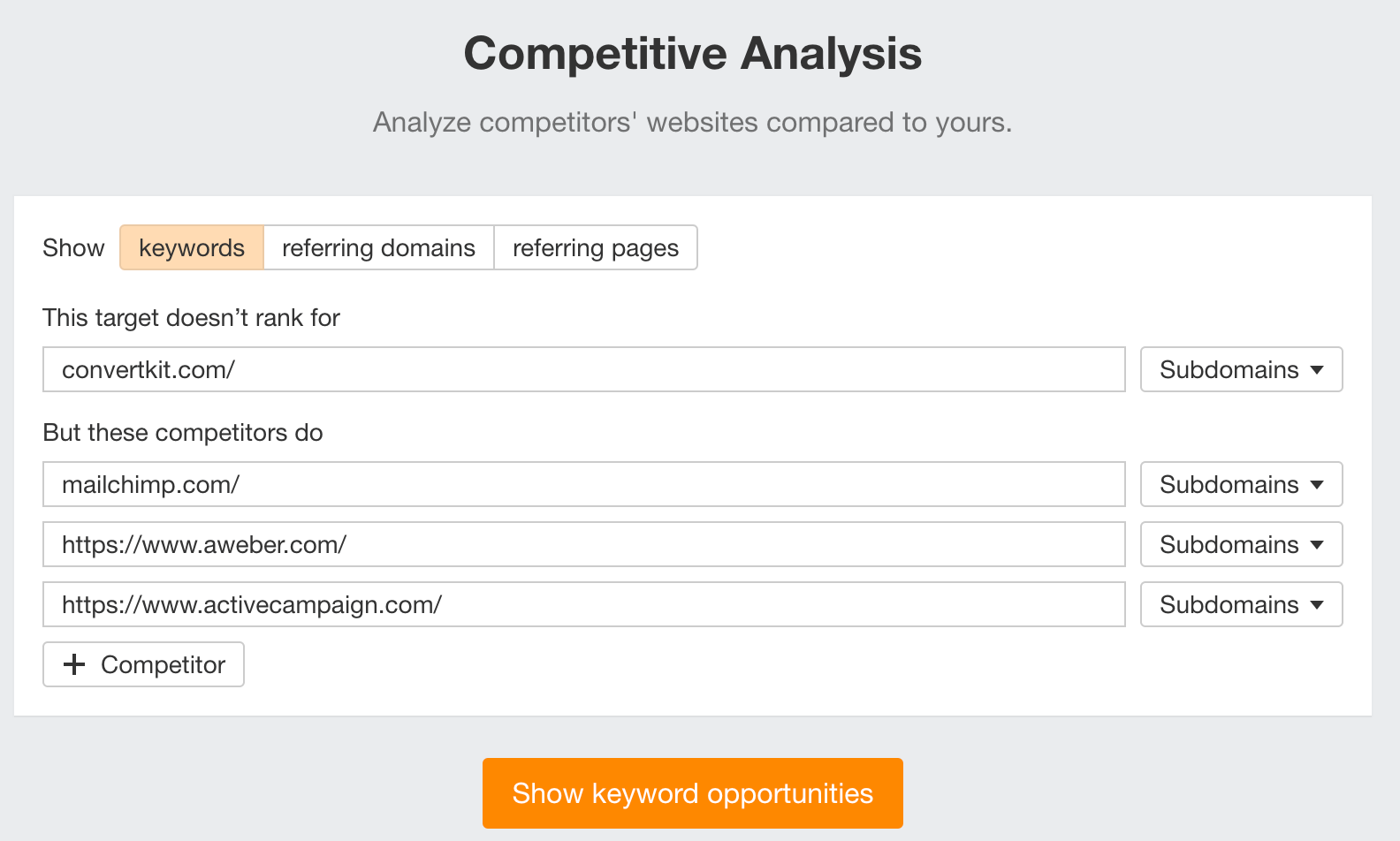
You’ll see all of the key phrases that at the very least considered one of these opponents ranks for, however you don’t.

You can too slim the checklist right down to key phrases that each one opponents rank for. Click on on the Rivals’ positions filter and select All 3 opponents:
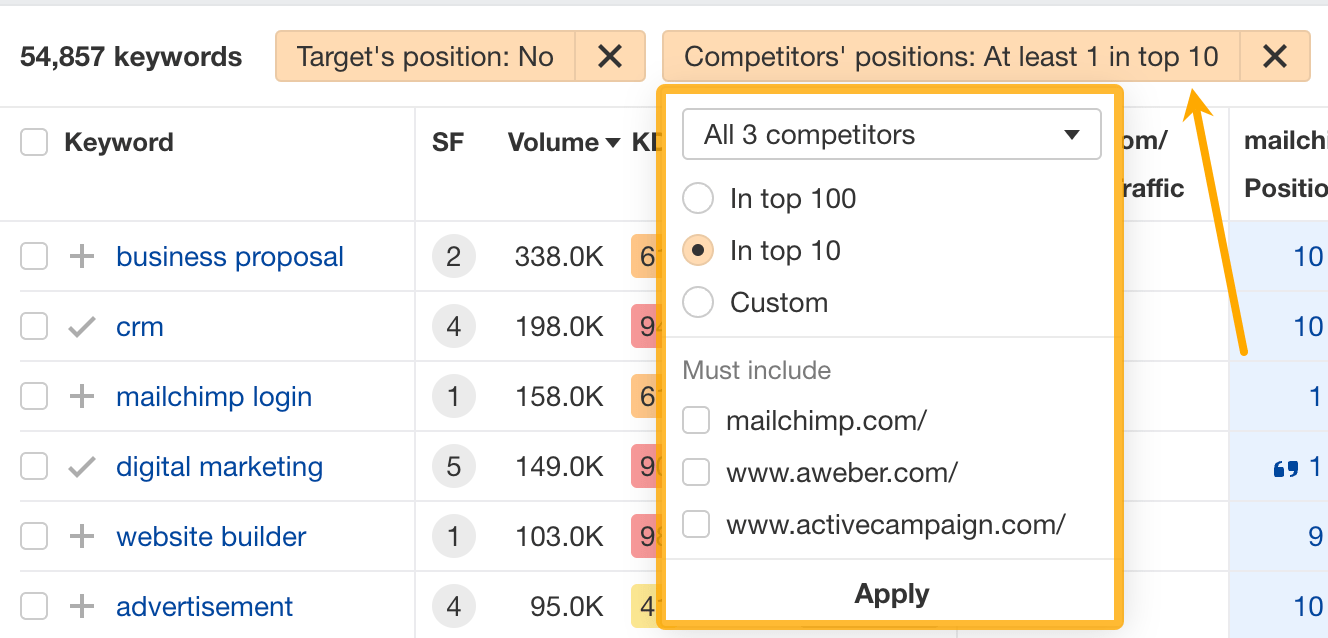
- Go to Ahrefs’ Website Explorer
- Enter your competitor’s area
- Go to the Paid key phrases report

This report exhibits you the key phrases your opponents are focusing on by way of Google Advertisements.
Since your competitor is paying for visitors from these key phrases, it might point out that they’re worthwhile for them—and might be for you, too.
You already know what key phrases your opponents are rating for or bidding on. However what do you do with them? There are mainly three choices.
1. Create pages to focus on these key phrases
You may solely rank for key phrases in case you have content material about them. So, probably the most simple factor you are able to do for opponents’ key phrases you need to rank for is to create pages to focus on them.
Nevertheless, earlier than you do that, it’s value clustering your competitor’s key phrases by Dad or mum Matter. It will group key phrases that imply the identical or comparable issues so you’ll be able to goal all of them with one web page.
Right here’s how one can do that:
- Export your competitor’s key phrases, both from the Natural Key phrases or Content material Hole report
- Paste them into Key phrases Explorer
- Click on the “Clusters by Dad or mum Matter” tab
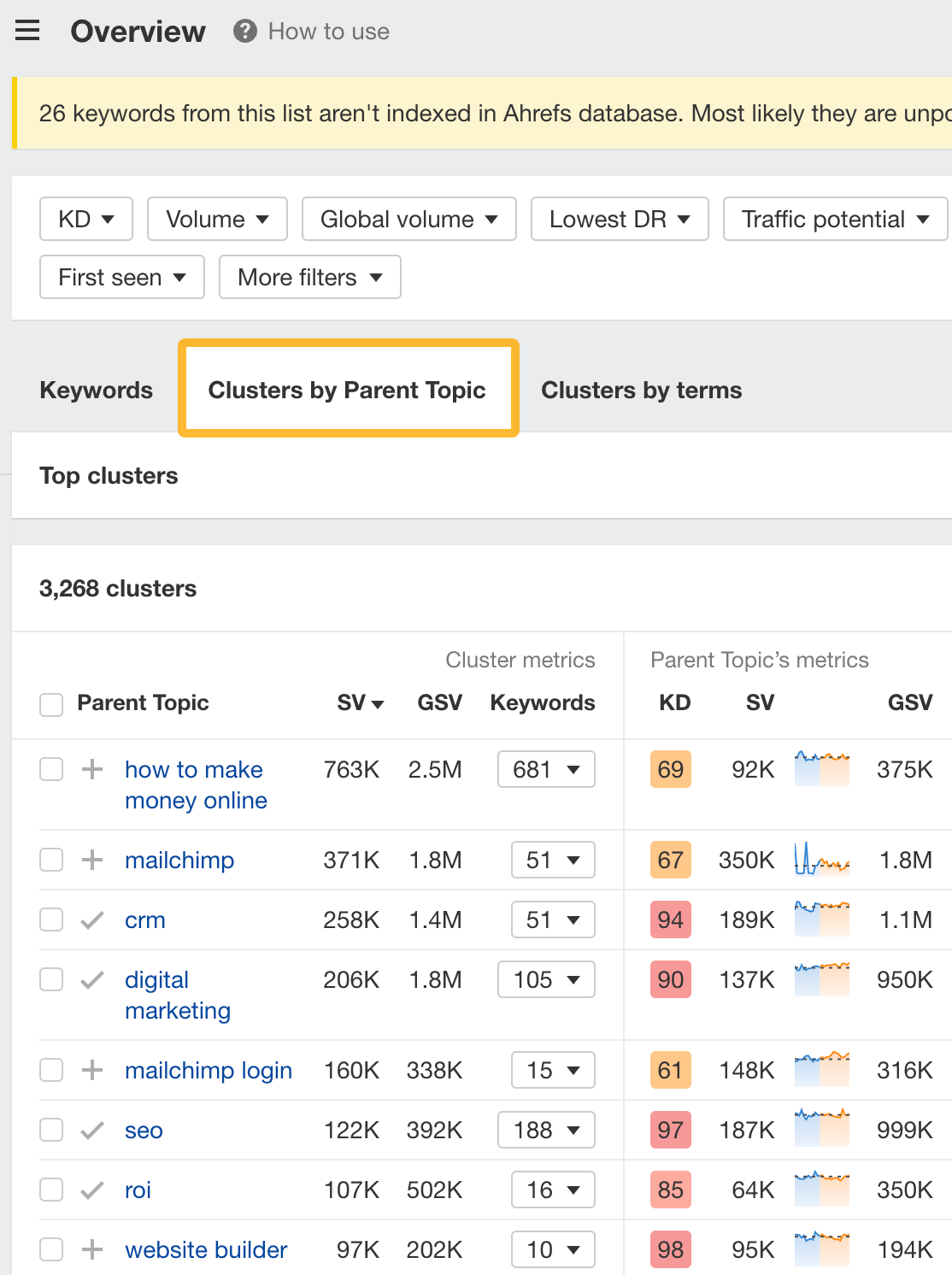
For instance, MailChimp ranks for key phrases like “what’s digital advertising and marketing” and “digital advertising and marketing definition.” These and lots of others get clustered beneath the Dad or mum Matter of “digital advertising and marketing” as a result of individuals trying to find them are all on the lookout for the identical factor: a definition of digital advertising and marketing. You solely have to create one web page to probably rank for all these key phrases.

2. Optimize present content material by filling subtopics
You don’t all the time have to create new content material to rank for opponents’ key phrases. Typically, you’ll be able to optimize the content material you have already got to rank for them.
How are you aware which key phrases you are able to do this for? Attempt this:
- Export your competitor’s key phrases
- Paste them into Key phrases Explorer
- Click on the “Clusters by Dad or mum Matter” tab
- Search for Dad or mum Subjects you have already got content material about
For instance, if we analyze our competitor, we are able to see that seven key phrases they rank for fall beneath the Dad or mum Matter of “press launch template.”

If we search our website, we see that we have already got a web page about this subject.

If we click on the caret and examine the key phrases within the cluster, we see key phrases like “press launch instance” and “press launch format.”

To rank for the key phrases within the cluster, we are able to most likely optimize the web page we have already got by including sections concerning the subtopics of “press launch examples” and “press launch format.”
3. Goal these key phrases with Google Advertisements
Paid key phrases are the only—look by the report and see if there are any related key phrases you would possibly need to goal, too.
For instance, Mailchimp is bidding for the key phrase “how one can create a publication.”

For those who’re ConvertKit, you might also need to goal this key phrase because it’s related.
For those who determine to focus on the identical key phrase by way of Google Advertisements, you’ll be able to hover over the magnifying glass to see the adverts your competitor is utilizing.
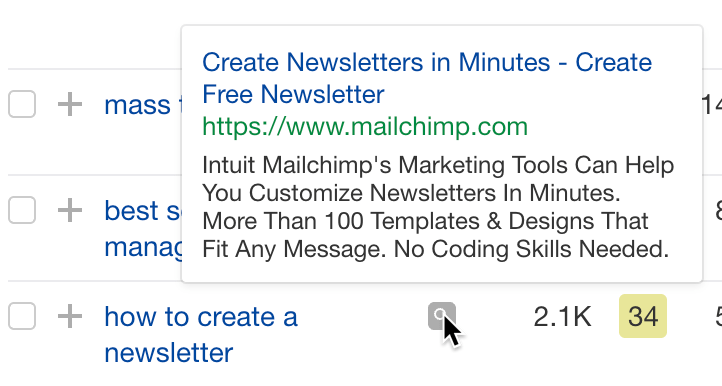
You can too see the touchdown web page your competitor directs advert visitors to beneath the URL column.

Be taught extra
Try extra tutorials on how one can do competitor key phrase evaluation:

